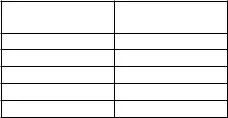The DR 1094 is used by employers to report Colorado W-2 income taxes that have been withheld from employee pay. Review
publication FYI Withholding 5, Colorado Wage Withholding Tax
Requirements for detailed information about iling requirements and frequencies.
After completing payroll and withholding Colorado income taxes as deined by the Colorado Income Tax Withholding Tables for Employers (DR 1098), report here the total tax collected for the iling period. This is the Colorado withholding tax that will be
reported at the end of the year on federal form W-2-Wage and Tax Statement.
You may pay tax through Revenue Online,
www.Colorado.gov/RevenueOnline by echeck or credit card. Or, you may sign up for Electronic Funds Transfer (EFT).
Visit www.Colorado.gov/revenue/eft for information on how to register and pay through EFT. Do not ile a paper DR 1094 if you
remitted the withholding taxes via EFT. To prevent being billed by the Department when no taxes were withheld during the iling period, ile a zero return. A paper zero return may be mailed, or for fast and simple iling of a zero return access www.Colorado.gov/RevenueOnline and ile electronically.
Instructions for Amending Withholding Taxes
If you overpaid for a period, you may take a credit on a future
return in the current calendar year. The credit may be taken on a return/payment iled at www.Colorado.gov/RevenueOnline or a subsequent paper form W-2 Wage Withholding Tax Return (DR 1094). To claim the credit, deduct the overpayment from line 1 of
your return. You may only deduct an amount bringing your return to zero (0.00) for the period you are reporting. If you are unable to claim the credit on a subsequent DR 1094 within the calendar
year, you should claim a refund on your Annual Transmittal of
State W-2 Forms (DR 1093) for the appropriate year.
If additional tax is owed, ile another return for the period the tax is
due reporting only the additional amount owed at www.Colorado.gov/RevenueOnline If you cannot ile electronically, ile a paper DR 1094 reporting only the additional tax due for the period.
Refunds will be issued after receipt of your DR 1093 iled at the
end of February following the end of the calendar year.
FYI publications, forms, and answers to common questions are available at www.TaxColorado.com, the oficial Taxation Web site.
Or, you may call (303) 238-7378 to speak with a representative.
Account Number: List the Colorado business account number from your withholding certiicate or sales tax license. This number
is 8 digits. Do not list your FEIN or EFT number here.
Filing Period: List here the iling period for this return. Be sure you are using the correct period end date for your deined iling frequency.
Line 1 Enter the amount of Colorado income tax withheld for the period. If the tax is zero, ile a zero return through Revenue
Online at www.Colorado.gov/RevenueOnline
Line 2 If a previous period in the current tax year was overstated and paid, complete the worksheet below and calculate the overpayment for the tax period. See the instructions for
amending withholding taxes.
Line 3 Calculate the net amount due by subtracting line 2 from line 1.
Line 4 Complete only if return is being iled after the due date.
Penalty is calculated by determining how far past the due date the return is being iled. If the return is iled within the irst month after the due date, calculate the penalty at 5%
(.05) of the tax due, or $5, whichever is greater. For each additional month thereafter the return is delinquent, add one-half of 1% (.005), up to a maximum of 12%.
Line 5 Complete only if return is being iled after the due date. Refer to publication FYI General 11, Colorado Civil Tax
Penalties and Interest to calculate late payment interest. Enter the calculated interest amount on line 5.
Line 6 Add together the amounts listed on lines 3, 4 and 5. This
is the amount that is due. Make check or money order payable to the Colorado Department of Revenue. Use the
memo to clearly list “ W-2 WTH,” your account number, and tax period.
Mail to and make checks payable to:
Colorado Department of Revenue
Denver CO 80261-0009

